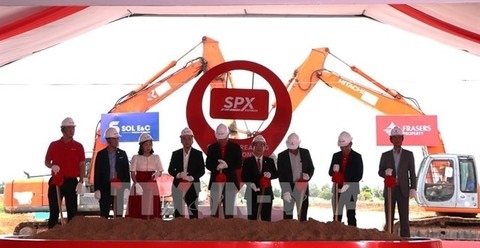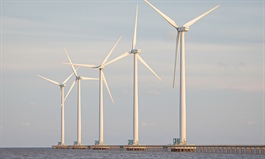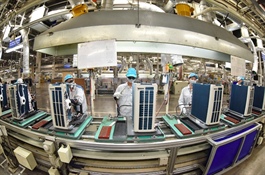Seaport development on the horizon
Seaport development on the horizon
The development of seaports is to be prioritised over the next three decades to meet increasing demand in shipping services, according to Nguyen Xuan Sang, director of Vietnam Maritime Administration under the Ministry of Transport. 
Infrastructure feeding into the seaport was also being planned, including inland waterways and road and railway systems, which would also play a role in collecting and delivering goods into the seaport system, according to Sang.
Plans were compiled to provide a comprehensive picture of the transportation industry in the next 10 years.
Sang said that this would help ensure the connectivity of different modes of transport while fully utilising the advantages afforded to each region.
The plan will be the first time that inland container depots and ports serving inland waterway vehicles would be included in the planning.
Temporary ports will also be considered in areas with favourable natural conditions such as Quang Ninh, the Southeast region, and the Mekong River Delta.
The seaport planning would also incorporate industry 4.0 technology in the seaport construction and management and be applied to develop green seaports and promote energy savings and the efficient use of coastal resources.
During the past 10 years, the volume of cargo transported through seaports in Viet Nam grew more than 11 per cent per year.
Viet Nam is targeting economic growth of seven per cent per year in the 2021-30 period.
It has been forecast that the volume of cargo transported through the seaport system would increase by 1.6-2.1 times by 2030 and 4.1-4.8 times by 2050.
It was estimated that Viet Nam would need around VND300-320 trillion to develop the seaport system by 2030, he said, adding that developing the seaport system would help Viet Nam become an important link in the global value chain.
Sang also said that the investment from the State budget would focus on developing major seaport infrastructure but policies to attract private investment would also be on the agenda.
In the 2011-20 period, about VND202 trillion was invested in seaports, accounting for 20.6 per cent of the total investment in transportation infrastructure. Private investment accounted for 86 per cent of that total.
Viet Nam’s seaport system has seen significant development in the past decade. Wharf length has increased from 20 km in 2020 to 96 km currently and the handling capacity from 82.4 million tonnes to 665 million tonnes.
In the first five months of this year, the seaport system handled more than 209 million tonnes of cargo, representing a rise of nine per cent compared to the same period last year.
bizhub


























